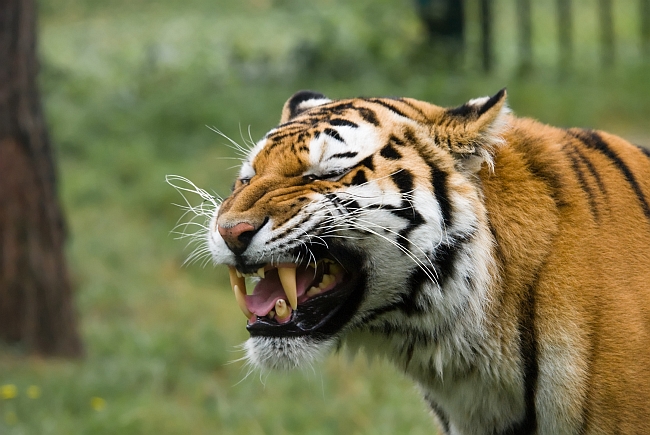
What is that face? Many kinds of mammals such as wild and domestic cats, horses, donkeys, deer, elk, goats, sheep, and cattle will pull their upper lip back and expose the gums and upper row of teeth. Cats tend to make this face a little differently, looking as if they are smiling, or breathing in a strange scent.
What is the FlehmenResponse?
The word flehmen comes from a German verb meaning to “bare teeth” or “curl lips. The animal’s face usually ends up looking like a cross between a grimace or a wide, awkward smile. Cats have the vomeronasal organ (also called the Jacobson’s organ) which is located between the septum of the nose and the hard palate of the mouth. This works as a receptacle and sends information to the hypothalamus in the brain. Through these small ducts in the roof of a cat’s mouth, they are able to better sense the area around them, and analyze pheromones of other creatures. Not all mammals do this, for example, dogs apparently have vomeronasal oragans, but they don’t flehmen.
What does it mean?
Because the expression of the face can look so unusual, many people mistakenly suppose the animal doing the flehmen response is upset, disgruntled, or even threatening. The flehmen response is a normal reaction of mammals when they want to find out information. They do this as a way of ascertaining details around them, or if they want to gauge if a female is in heat. Cats do so to understand whether or not a female is fertile and ovulating, through the scent of her urine. Males more frequently flehmen, in order assess the scent of another male’s urine where he has marked his territory, or to familiarize himself with a female’s pheromones. Female cats flehmen when they are learning the scent of their newborn kittens; cats also do the flehmen response sometimes when around catnip, or unusual plants. It is a sensory method of sending information to the cat’s brain, and by giving him that innate “sense” and understanding of the surroundings. So though we may not understand the full extent of why animals have a flehmen response, we are aware of how it functions and what information the animal receives.
Next time you see the ridiculous sneer of your pet, you will know he is simply educating himself about the immediate area and the inhabitants around him!

